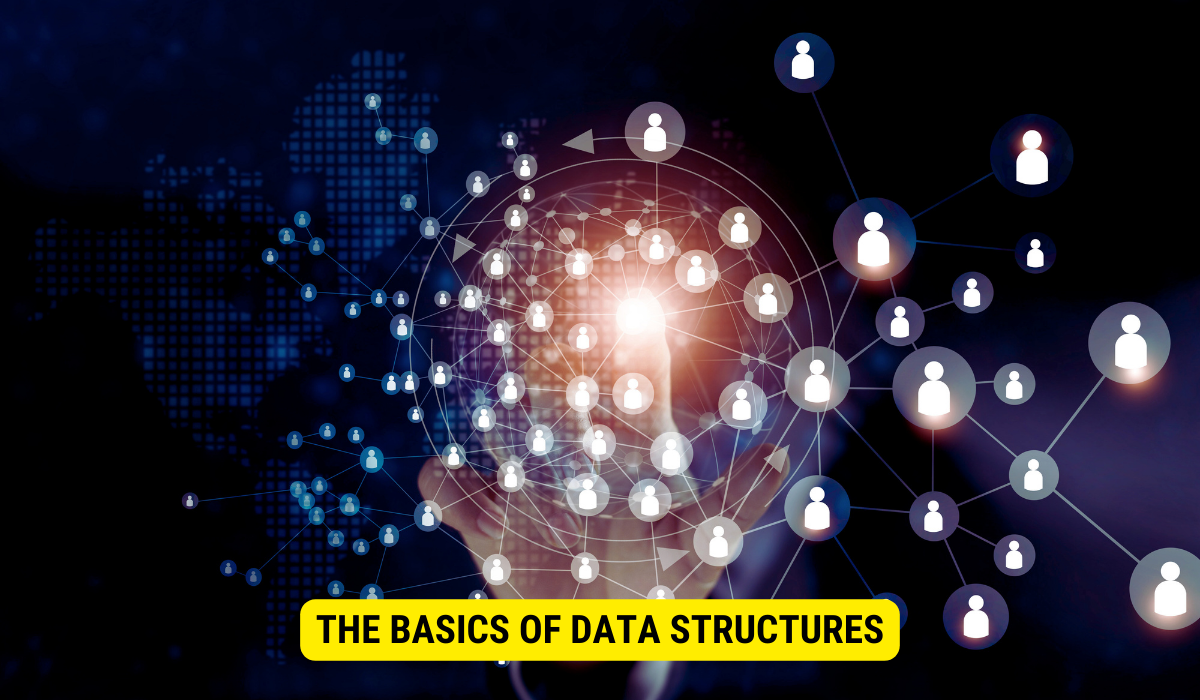Data structures, the organizational frameworks for storing and managing data, play a pivotal role in cybersecurity. They facilitate efficient data processing, vulnerability analysis, and risk mitigation. While they bolster cyber defenses, poor implementation can introduce vulnerabilities. Advanced data structures like hashing and trees are critical for advanced cybersecurity measures. With emerging trends like machine learning, the future holds promise for even more sophisticated data structure applications in cybersecurity.
Data structures are crucial in safeguarding sensitive information against malicious attacks in cybersecurity. Understanding the basics of data structures is vital for mitigating vulnerabilities and enhancing security measures. Together, we will delve into the intricacies of data structures and their profound impact on cyber defenses.
The Basics of Data Structures

Before exploring the connection between data structures and cybersecurity, it is important to have a solid grasp of what data structures entail. Simply put, data structures refer to the organization and storage of data within a computer system. They determine how data is accessed, stored, and manipulated.
Data structures can be understood as the architectural framework that governs the storage and retrieval of information. It encompasses various techniques and algorithms used to organize and manage data effectively. Data structures encompass various elements, such as arrays, linked lists, stacks, queues, and graphs.
Defining Data Structures
Data structures are essential components of computer systems. They provide a systematic way to store and organize data, allowing for efficient retrieval and manipulation. Without data structures, the handling of information would be chaotic and inefficient.
Arrays represent one of the most straightforward and extensively employed data structures. They are comprised of similar data elements that are stored in sequential memory locations. Arrays prove especially valuable when managing substantial data sets that require swift access.
Linked lists constitute another frequently utilized data structure. Elements within a linked list are interconnected via pointers, creating a chain-like arrangement. This facilitates efficient element insertion and removal, rendering linked lists well-suited for dynamic data storage.
Stacks and queues are specialized data structures that follow specific rules for adding and removing elements. Stacks, also known as Last-In-First-Out (LIFO) structures, allow elements to be added or removed only from the top. This makes them suitable for tasks that require a last-in, first-out approach, such as function calls or undo operations.
On the other hand, queues are First-In-First-Out (FIFO) structures, where elements are added at the rear and removed from the front. Queues are commonly used in scenarios where the order of data processing is important, such as task scheduling or message queues.
Graphs are a more complex data structure that represents connections between elements. They consist of nodes (vertices) and edges, where each edge represents a relationship among two nodes. Graphs are widely used in various applications, including social networks, transportation systems, and computer networks.
Types of Data Structures
There are several data structures, each with unique properties and applications. Understanding the different types of data structures is crucial for selecting the most appropriate one for a given task.
- Arrays: A collection of similar data items stored in contiguous memory locations. Arrays provide fast access to elements based on their index, making them suitable for tasks that require frequent random access.
- Linked Lists: A data structure where elements are connected through pointers. Linked lists allow for efficient insertion and deletion of elements, making them ideal for dynamic data storage.
- Stacks: A Last-In-First-Out (LIFO) structure in which elements are added or removed from the top. Stacks are commonly used in programming languages for function calls and managing program execution.
- Queues: A First-In-First-Out (FIFO) structure in which elements are added at the rear and removed from the front. Queues are often used in scenarios where the order of data processing is important, such as task scheduling or message queues.
- Graphs: A group of nodes and edges that represent connections between elements. Graphs are versatile data structures used in various applications, including social networks, computer networks, and route planning.
Importance of Data Structures in Computing
Data structures play a crucial role in computing systems. They provide the foundation for efficient data handling, storage, and retrieval. Computer programs can process and analyze information faster and more accurately by utilizing appropriate data structures.
Effective data structures play a crucial role in the realm of cybersecurity. As cyber threats continue to advance in complexity, the ability to swiftly and precisely examine substantial volumes of data remains paramount for uncovering and addressing security breaches.
For instance, intrusion detection systems rely on data structures such as arrays and linked lists to store and scrutinize network traffic data. By efficiently organizing and retrieving this information, these systems can discern patterns and irregularities that might signal a potential security hazard.
In cryptography, data structures such as trees and graphs represent complex relationships between cryptographic keys and algorithms. These structures enable efficient key management and encryption/decryption operations, ensuring the security and integrity of sensitive data.
In conclusion, data structures are not just abstract concepts in computer science. They are practical tools that enable efficient data management and analysis. Understanding the different types of data structures and their applications is crucial for building robust and secure computing systems.
Data Structures and Cyber Security
Integrating data structures within cyber security frameworks is pivotal in ensuring robust defenses against cyber threats. Data structures enable efficient information processing and contribute to vulnerability analysis and risk mitigation.
Regarding cyber security, data structures serve as the backbone of numerous applications. They play a crucial role in organizing and managing large volumes of data, such as user credentials, network traffic logs, and system configurations. Security professionals can use appropriate data structures to implement algorithms that detect anomalies, patterns, and potential threats.
One example of how data structures enhance cyber security is using hash tables. Hash tables allow for efficient data storage and retrieval, making them ideal for tasks such as password verification. By storing hashed passwords in a hash table, an application can quickly check if a user’s entered password matches the stored hash without revealing the actual password.
Role of Data Structures in Cyber Security
Data structures serve as the foundation for numerous cybersecurity applications. They facilitate the organization and management of large volumes of data, such as user credentials, network traffic logs, and system configurations. Security professionals can use appropriate data structures to implement algorithms that detect anomalies, patterns, and potential threats.
In addition to hash tables, other data structures like linked lists and trees are also commonly used in cyber security. Linked lists can store and process network traffic logs, allowing for efficient analysis and identification of suspicious activities. On the other hand, trees can be utilized for the hierarchical representation of system configurations, enabling quick and accurate identification of potential vulnerabilities.
Data Structures and Vulnerability to Cyber Attacks
While data structures bolster cyber defenses, they can also introduce vulnerabilities if not implemented carefully. For example, poorly designed data structures may lead to buffer overflow attacks, where attackers can exploit the system’s limited memory capacity. It is essential to continuously evaluate the security implications of data structures to minimize potential attack vectors.
Buffer overflow attacks occur when a program writes data beyond the boundaries of a buffer, overwriting adjacent memory. This can lead to unauthorized access, system crashes, or even the execution of malicious code. Implementing secure data structures that properly handle memory allocation and deallocation can significantly reduce the risk of buffer overflow attacks.
Data Structures and Security Measures
Data structures are critical in encryption and authentication mechanisms, providing the foundation for secure communications. Public key infrastructure, cryptographic protocols, and digital certificates rely on efficient data structures for secure key management, storage, and message exchange.
For example, implementing a binary search tree can greatly enhance the efficiency of public key infrastructure. Using a binary search tree to store and retrieve public keys reduces the time complexity of key lookup from linear to logarithmic. This optimization enables faster and more secure encryption and decryption processes.
In conclusion, data structures are a fundamental aspect of computer science and a crucial component of cyber security. They enable efficient data processing, vulnerability analysis, and risk mitigation. By understanding the role of data structures in cyber security and implementing them securely, organizations can enhance their defenses against cyber threats and protect sensitive information.
Advanced-Data Structures in Cyber Security

As cyber threats become more sophisticated, the need for advanced data structures in cybersecurity intensifies. Two notable advanced data structures significantly impacting cyber defenses are hashing and trees.
Hashing and Cyber Security
Hashing, a technique that converts data into a unique fixed-size value, is extensively used in cybersecurity applications like password storage and data integrity verification. Efficient hashing algorithms can help protect passwords from being compromised and ensure the integrity of critical information.
Trees and Cyber Security
Tree’s hierarchical data structures find substantial employment in cybersecurity domains. Binary search trees enable efficient searching and retrieval of data. In contrast, balanced trees like AVL and Red-Black trees assist in securing and organizing large datasets. These structures are invaluable in intrusion detection, malware analysis, and anomaly detection.
Graphs and Cyber Security
Graphs facilitate the representation and analysis of complex relationships between data entities. They are integral to threat modeling, vulnerability assessment, and network analysis. By leveraging graph-based algorithms, security professionals can identify interconnected vulnerabilities and potential attack paths.
Future of Data Structures in Cyber Security
The future holds immense potential for further data structure advancements, promising exciting cybersecurity developments.
Emerging Trends in Data Structures
Machine learning and artificial intelligence are reshaping data structures in cybersecurity. Adaptive and self-evolving data structures are being developed to handle dynamic threat landscapes and counter emerging cyber threats effectively.
Predicted Impact on CyberSecurity
Integrating advanced data structures in future cyber security frameworks will enhance threat intelligence, improve incident response, and strengthen resilience against cyber attacks. Organizations can proactively outmaneuver cyber threats by harnessing the power of cutting-edge data structures.
Preparing for the Future of Cyber Security

To embrace the future of cybersecurity, organizations should invest in research and development efforts to explore innovative data structure solutions. Collaborations between academia, industry, and cybersecurity experts will be vital for shaping the future landscape of data structures in cybersecurity.
Key Takeaways
- Foundation of Computing: Data structures are foundational in computing, dictating how data is stored, organized, and accessed.
- Bolstering Cyber Defenses: Properly implemented data structures bolster cyber defenses, helping in anomaly detection, password verification, and secure data exchange.
- Potential Vulnerabilities: When not securely implemented, data structures can become a source of vulnerability, like in the case of buffer overflow attacks.
- Advanced-Data Structures: Hashing, trees, and graphs are advanced data structures integral to enhancing cybersecurity measures.
- Future Oriented: Machine learning and AI are reshaping the role of data structures in cybersecurity, with adaptive structures being developed for a dynamic threat landscape.
FAQs
What are data structures?
Data structures refer to the organization and storage of data within a computer system, determining how data is accessed, stored, and manipulated.
How do data structures impact cybersecurity?
Data structures enable efficient data processing and analysis, which are crucial for detecting threats, vulnerability analysis, and risk mitigation in the cybersecurity realm.
Which data structures are commonly used in cybersecurity applications?
Common data structures in cybersecurity include hash tables, linked lists, trees, and graphs.
How can poor data structure design compromise cybersecurity?
Poorly designed data structures can introduce vulnerabilities such as buffer overflow attacks, where attackers exploit the system’s limited memory capacity.
What is the future of data structures in cybersecurity?
The future envisions advancements in data structures integrated with machine learning and AI for more dynamic threat response, promising enhanced threat intelligence and improved incident response.
Conclusion
Understanding the interplay between data structures and cybersecurity is paramount in today’s digital age. Properly implemented, data structures can be the bedrock of a robust cybersecurity framework, enabling organizations to counter threats efficiently. As the cyber threat landscape continues to change, harnessing the full potential of data structures becomes more crucial than ever in ensuring digital safety and resilience.
